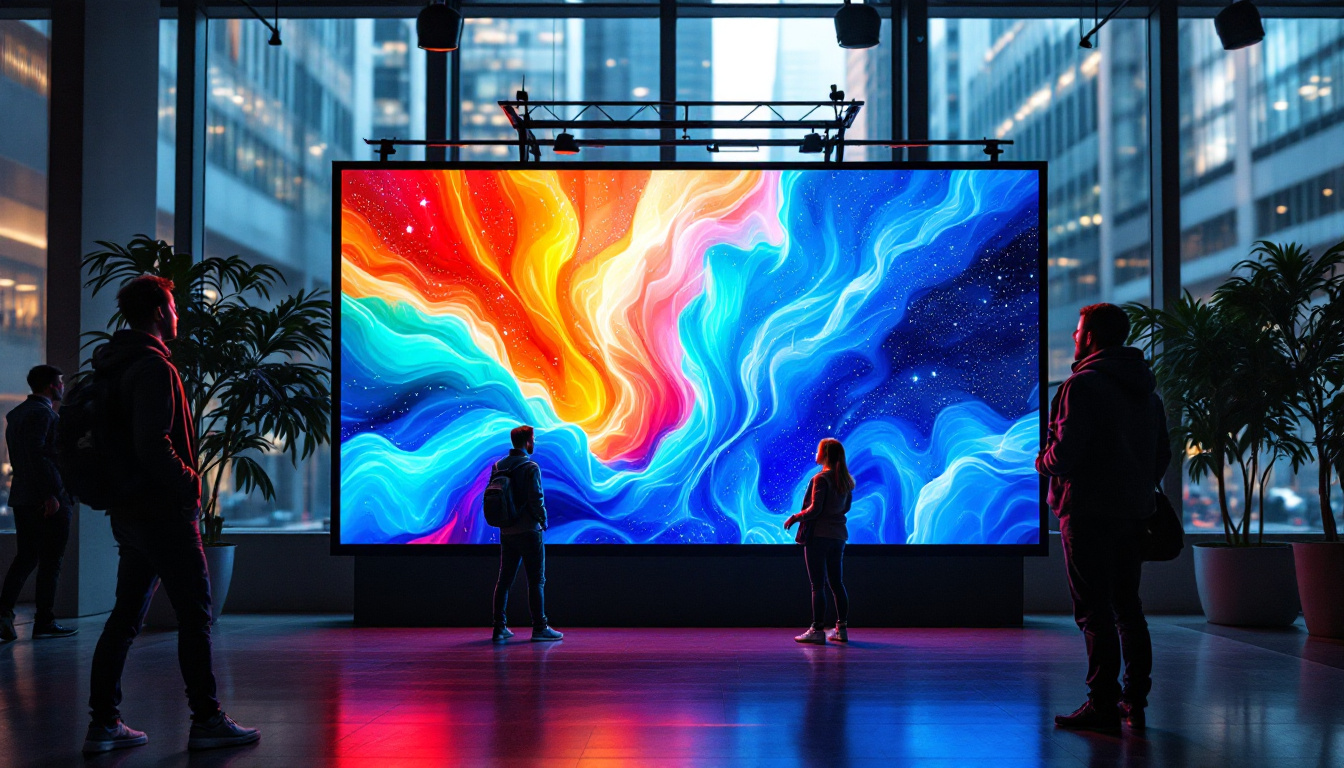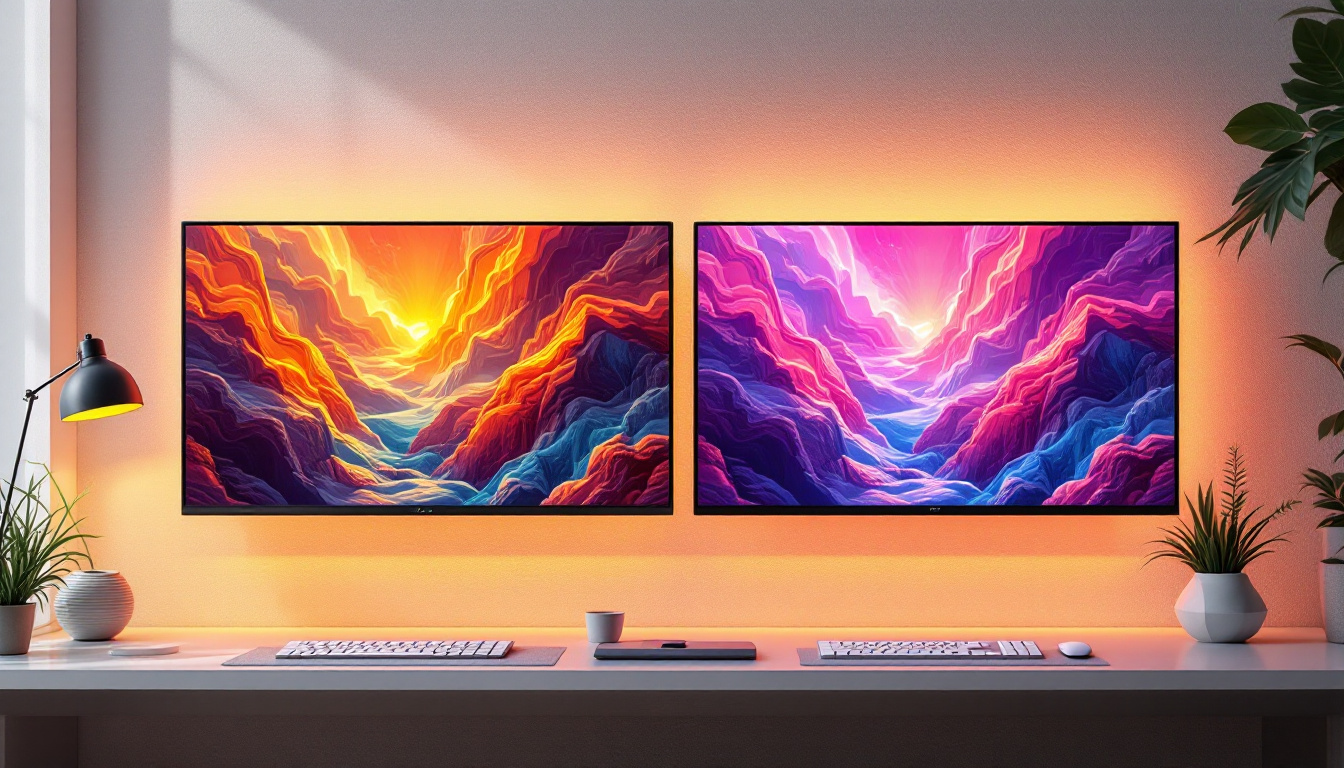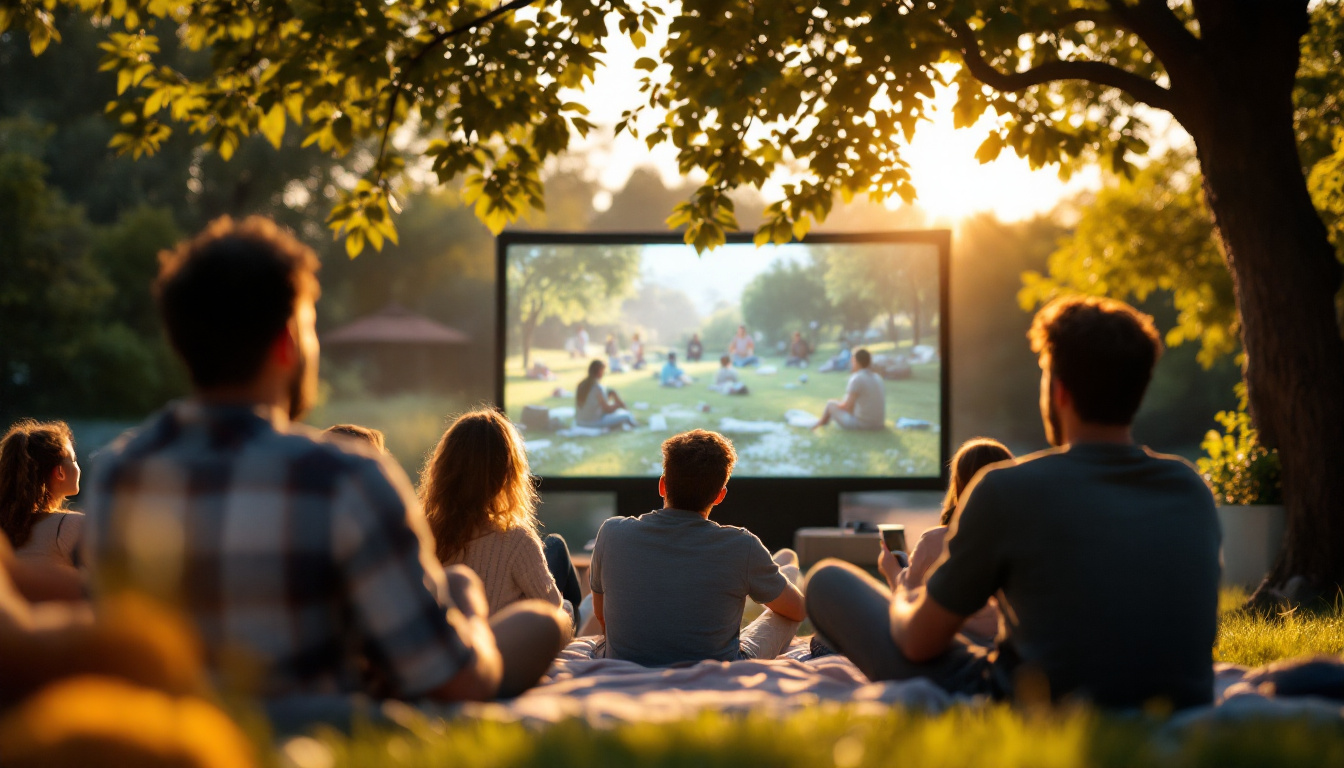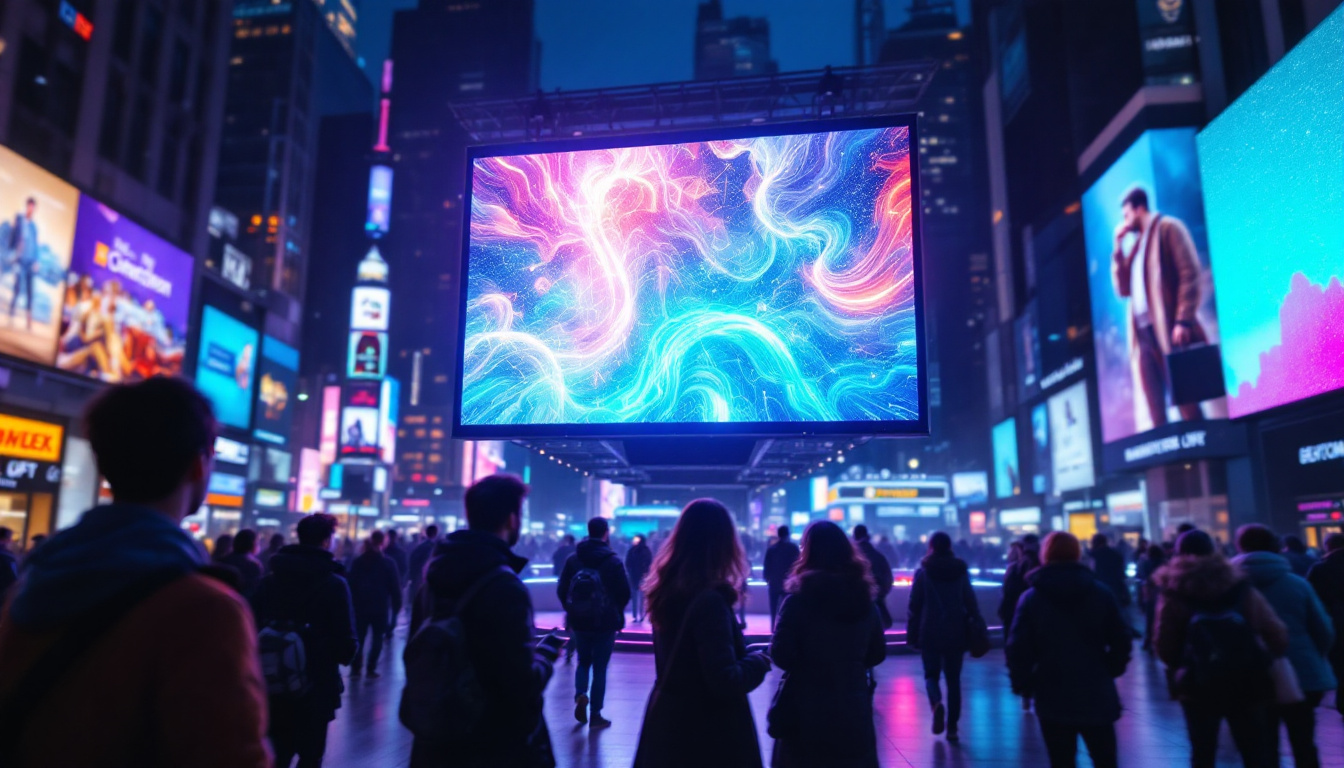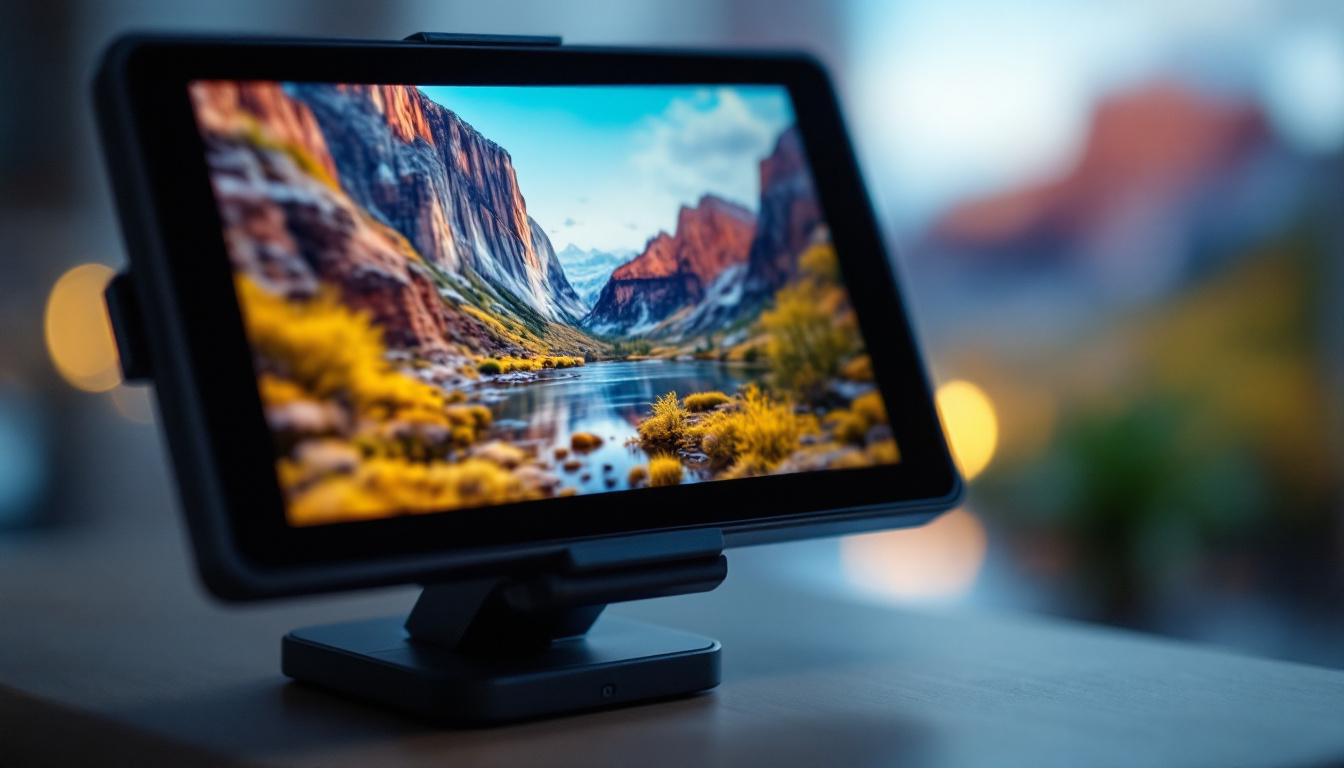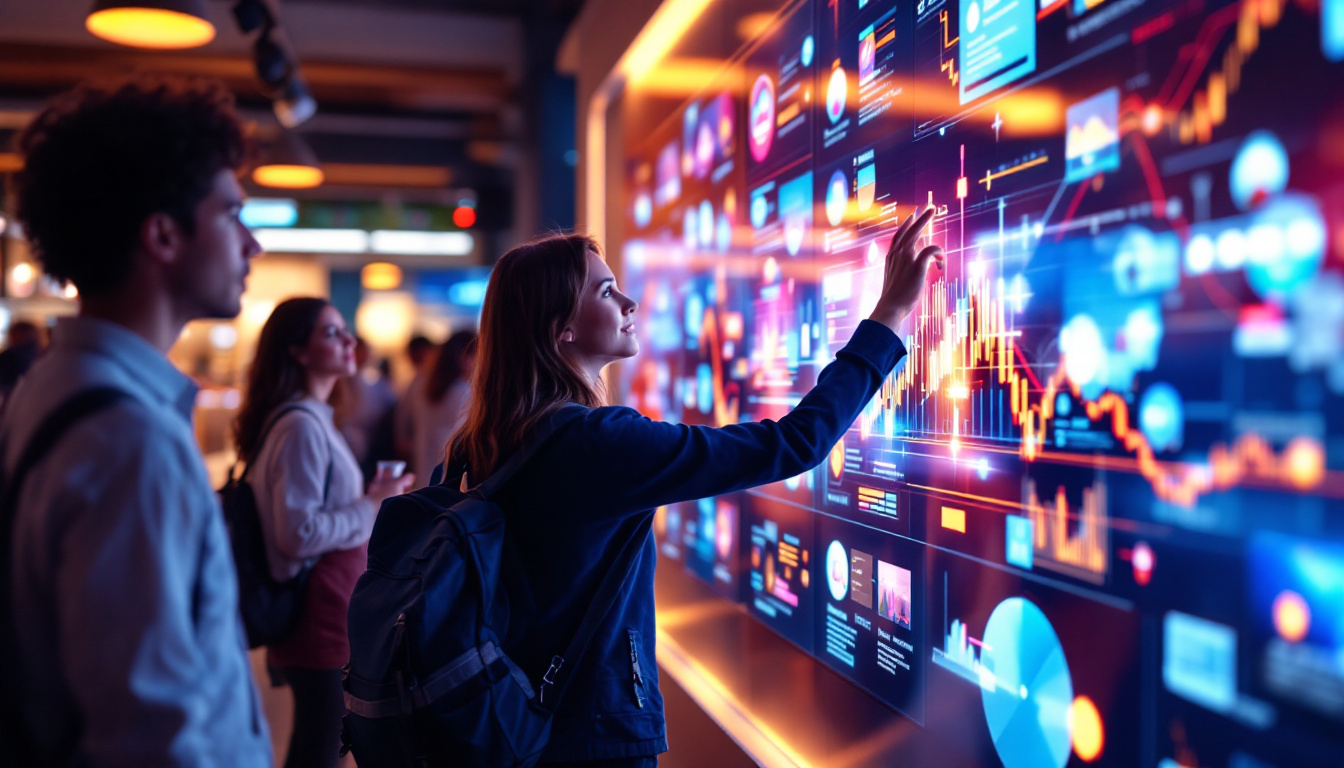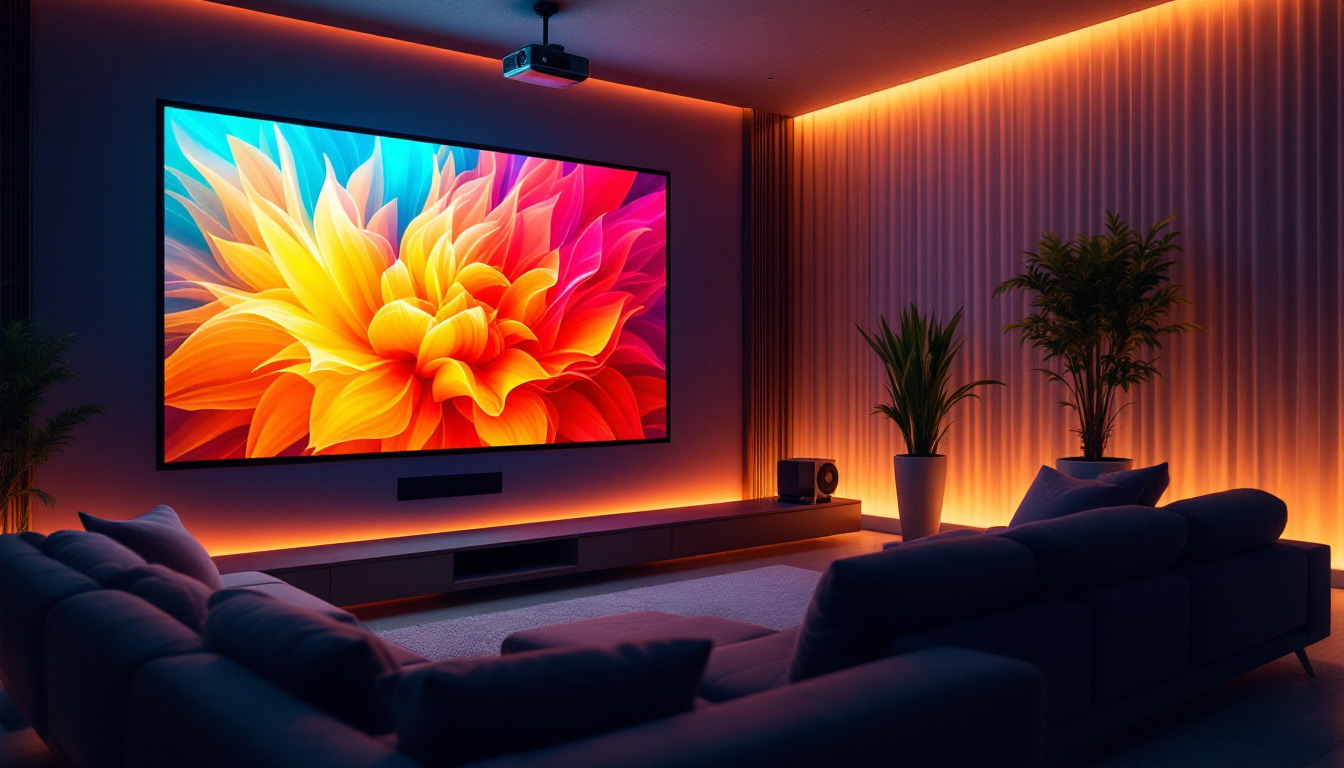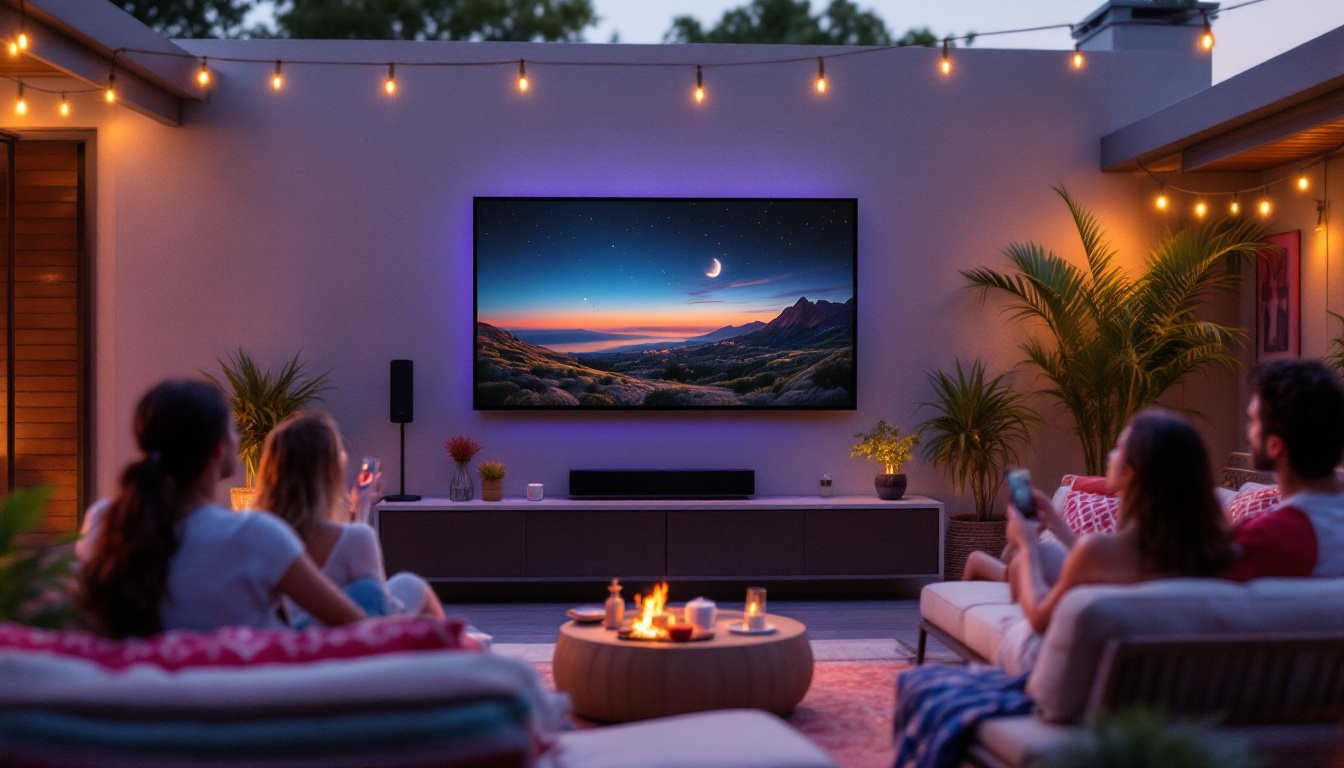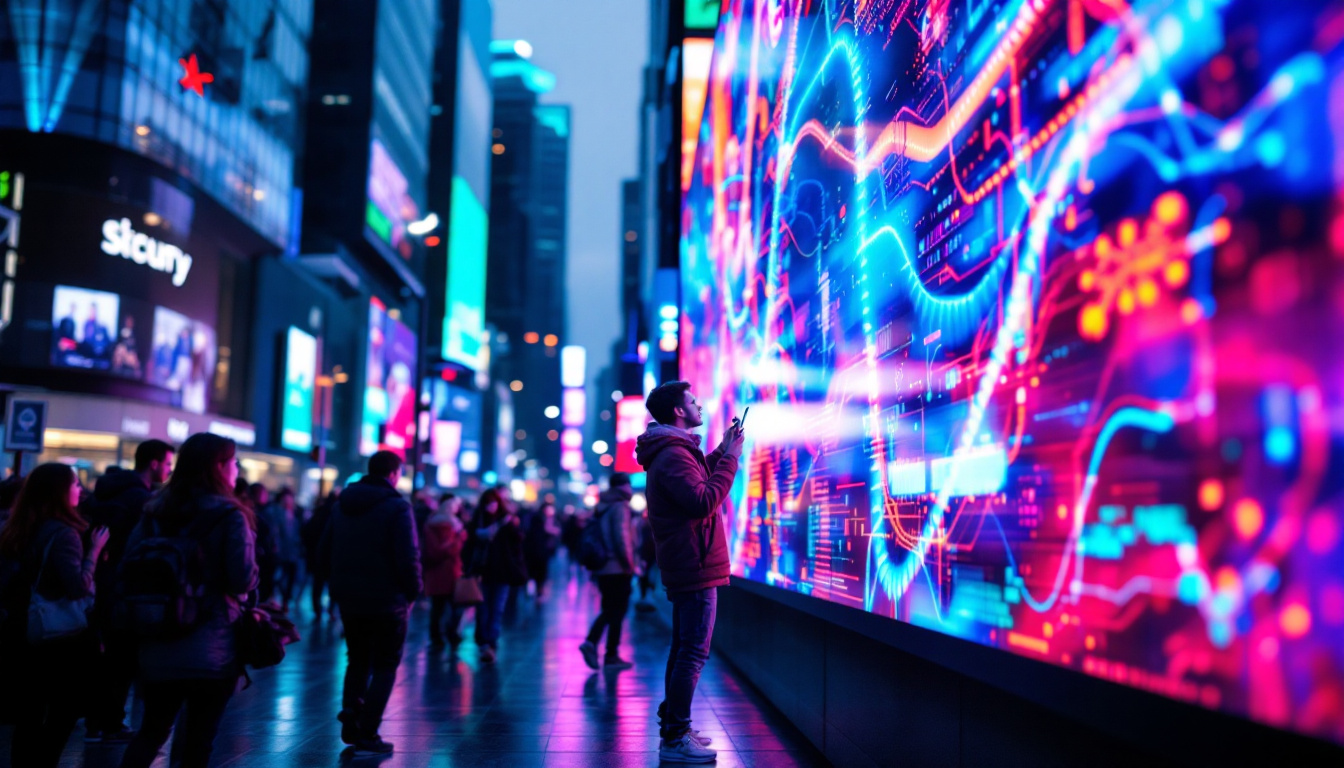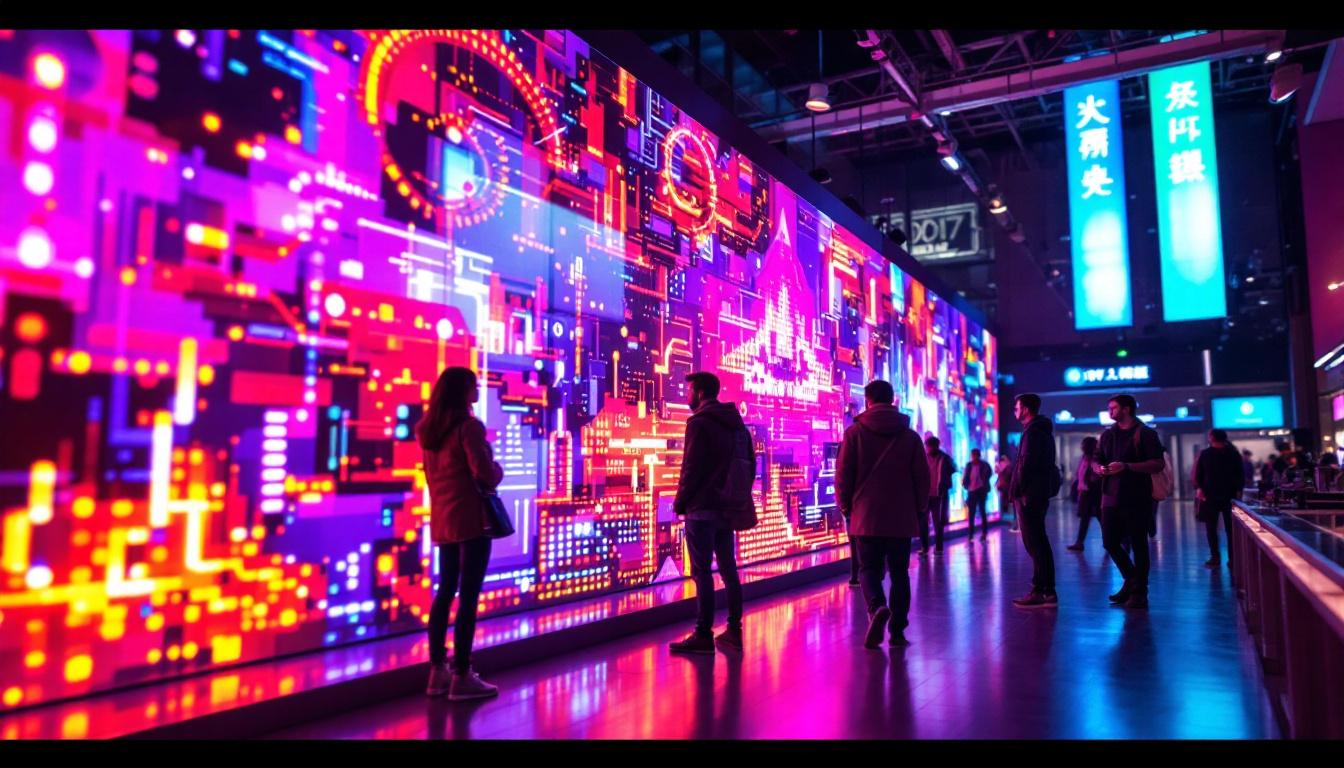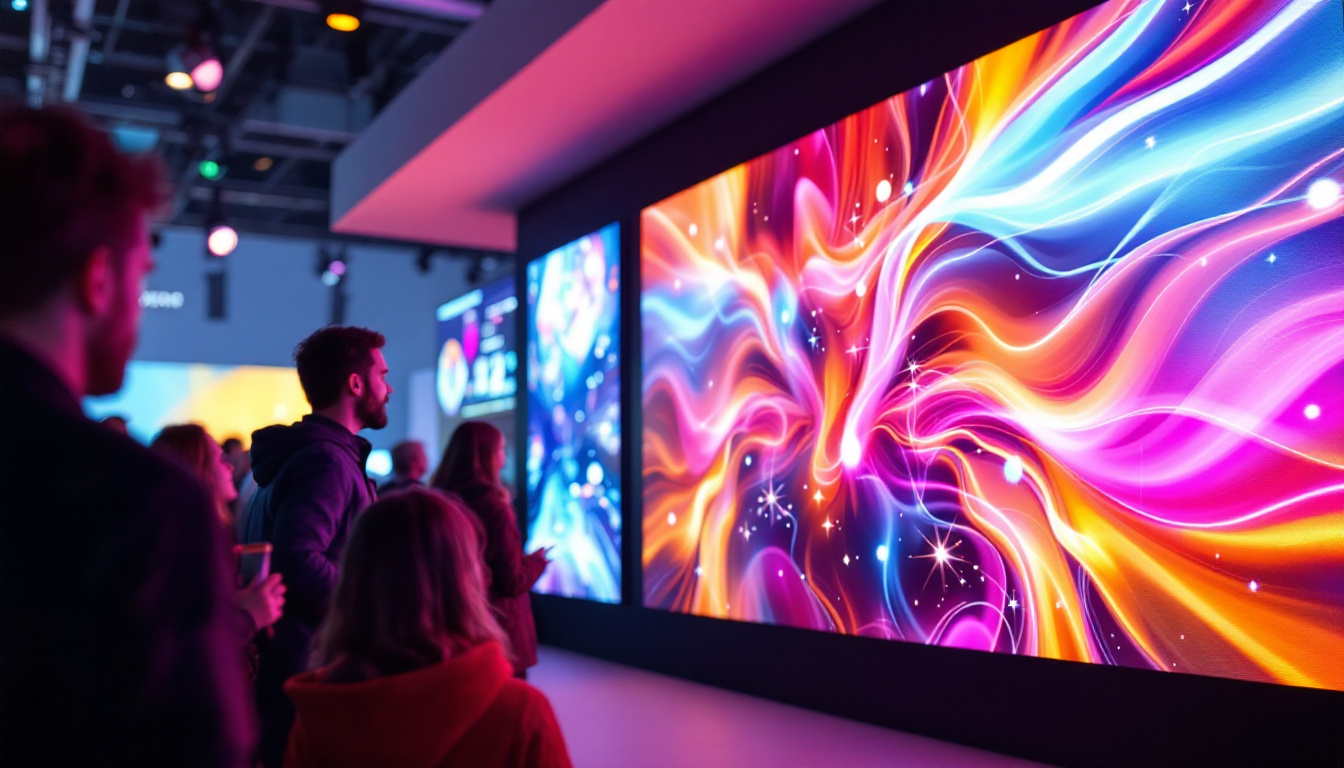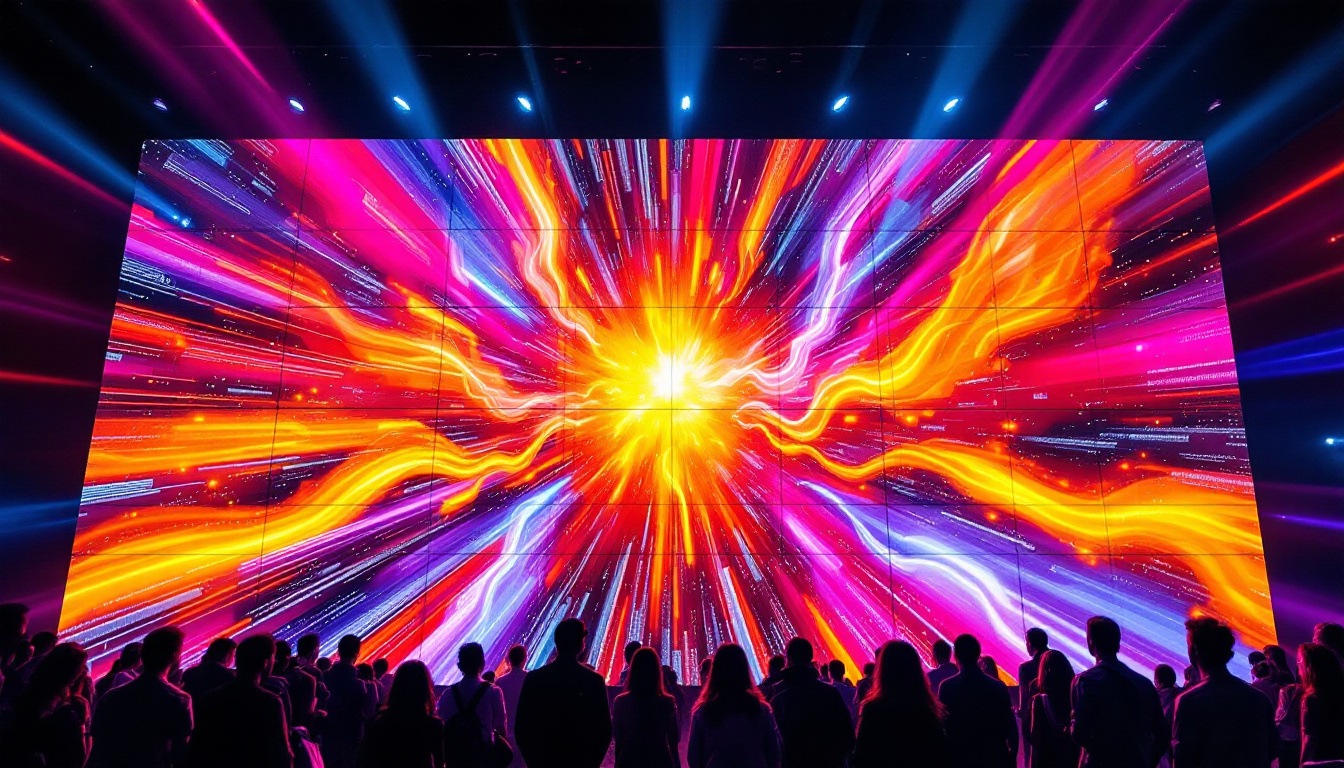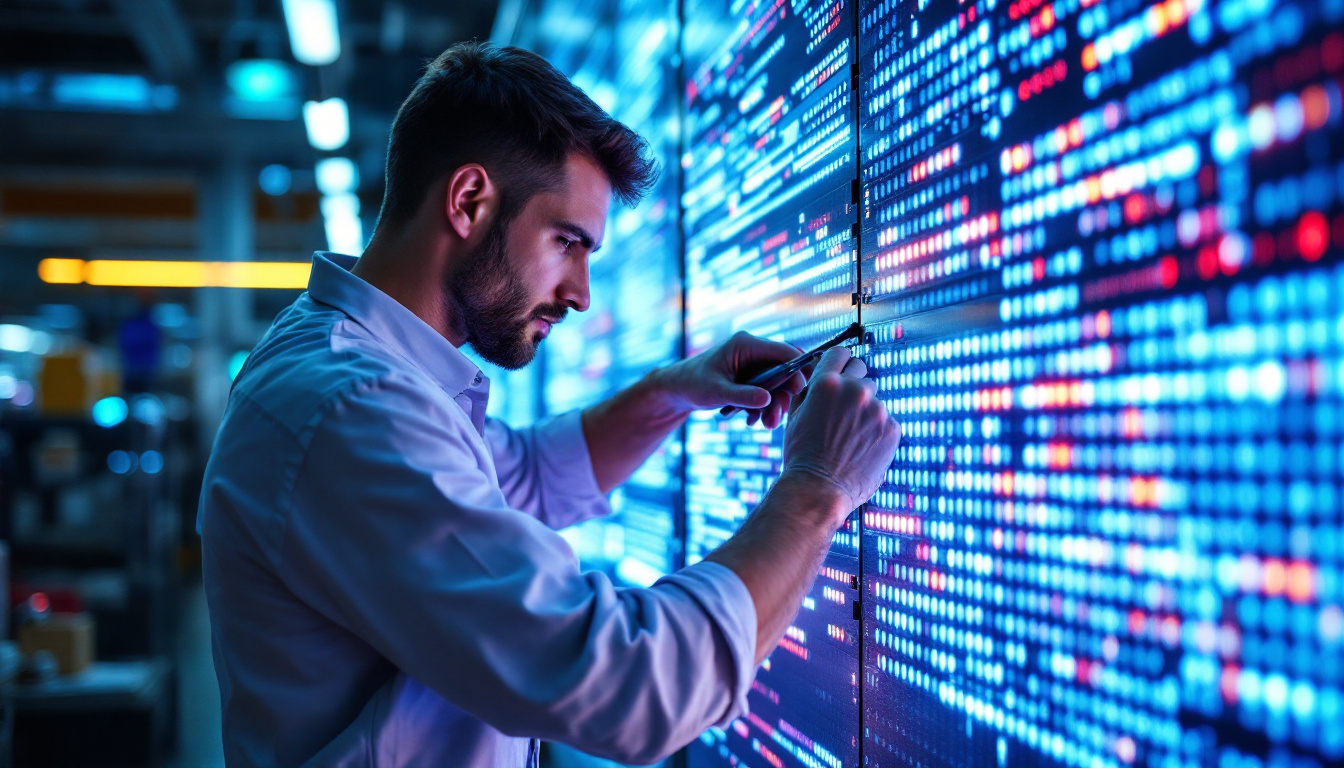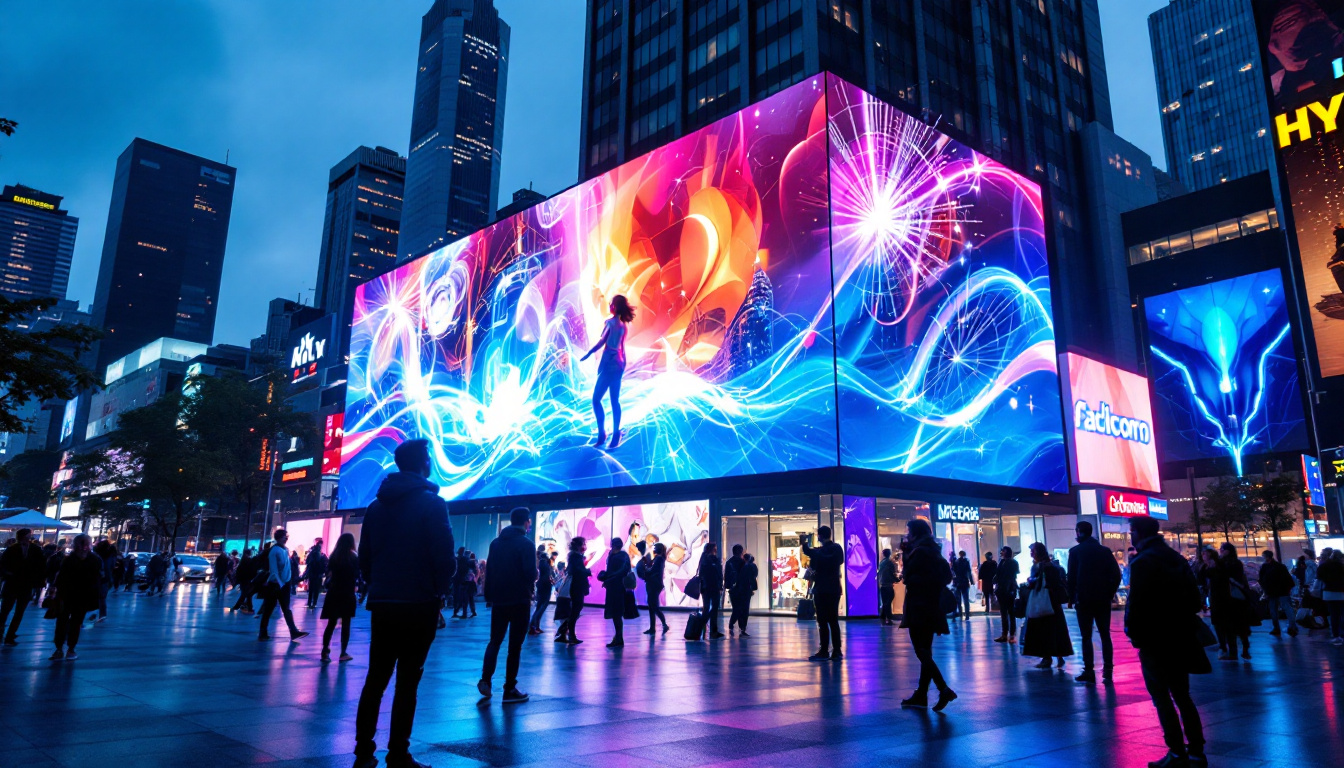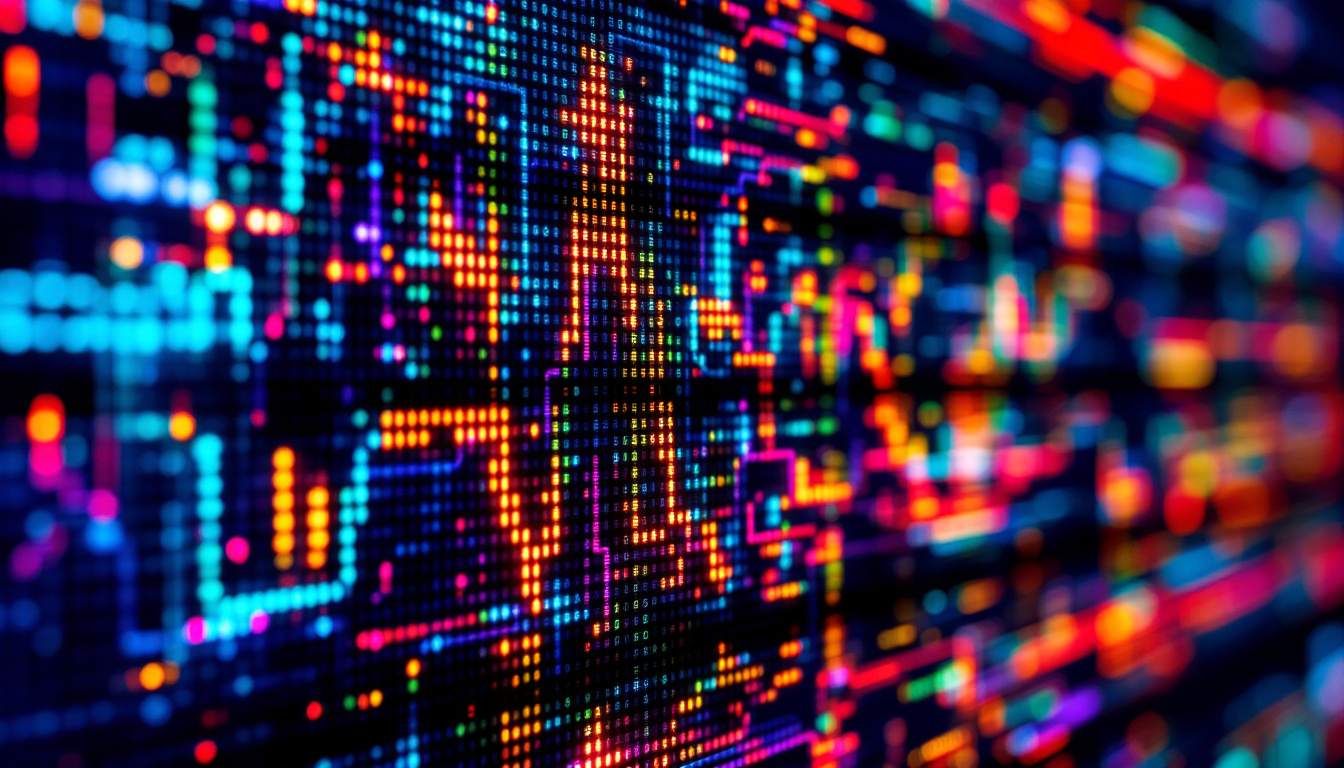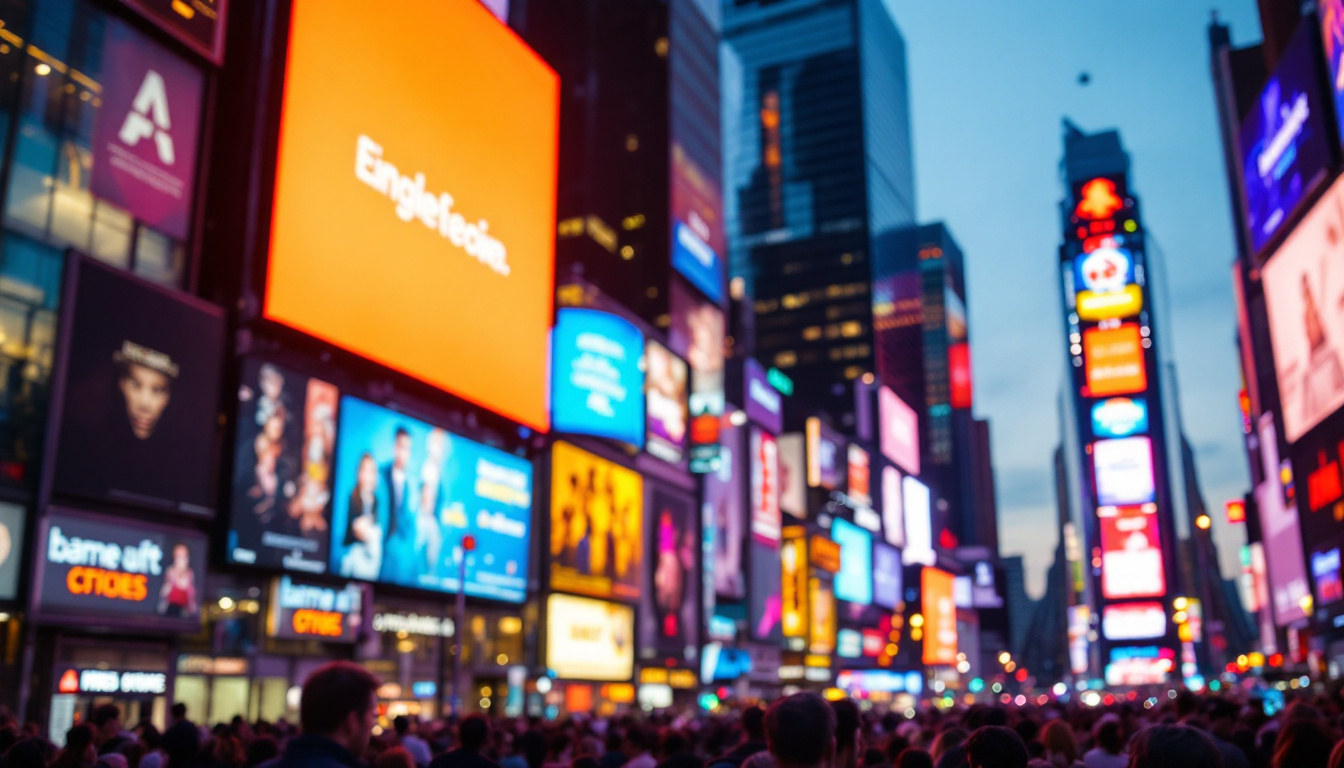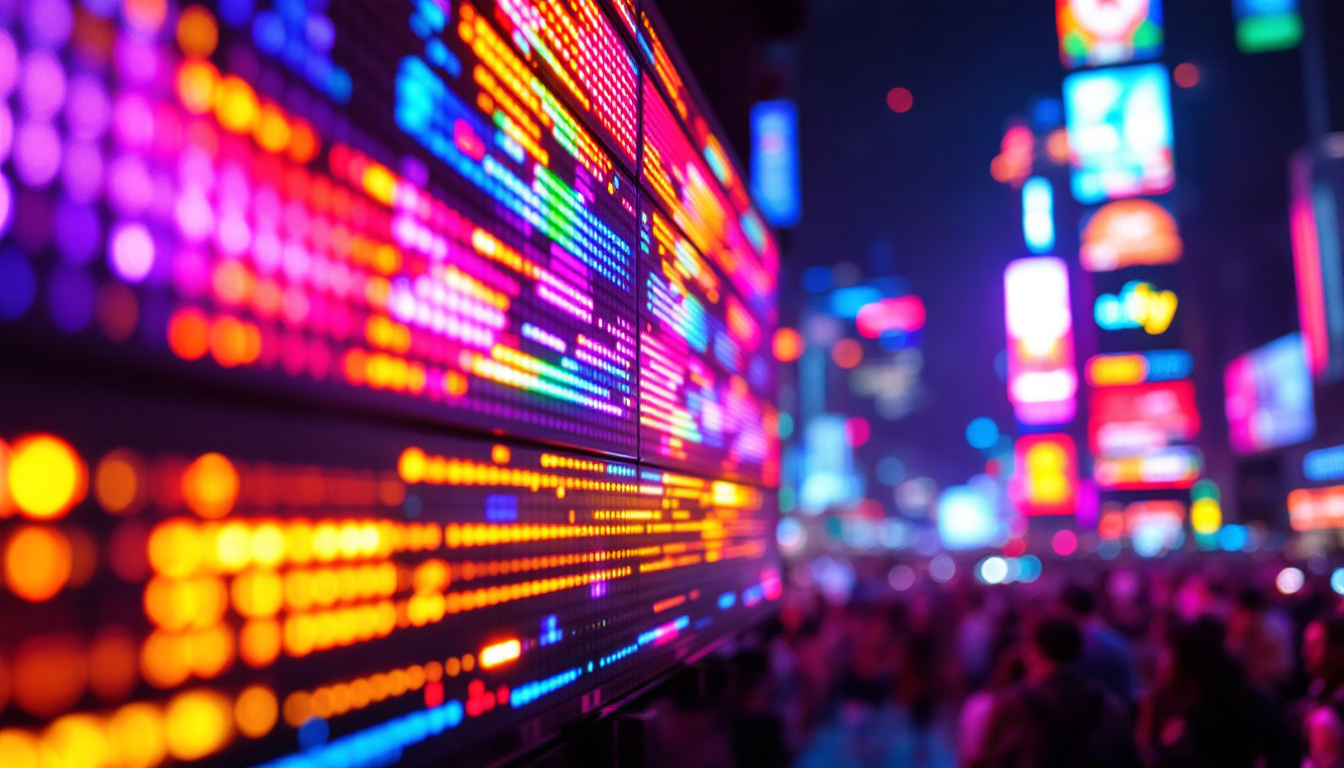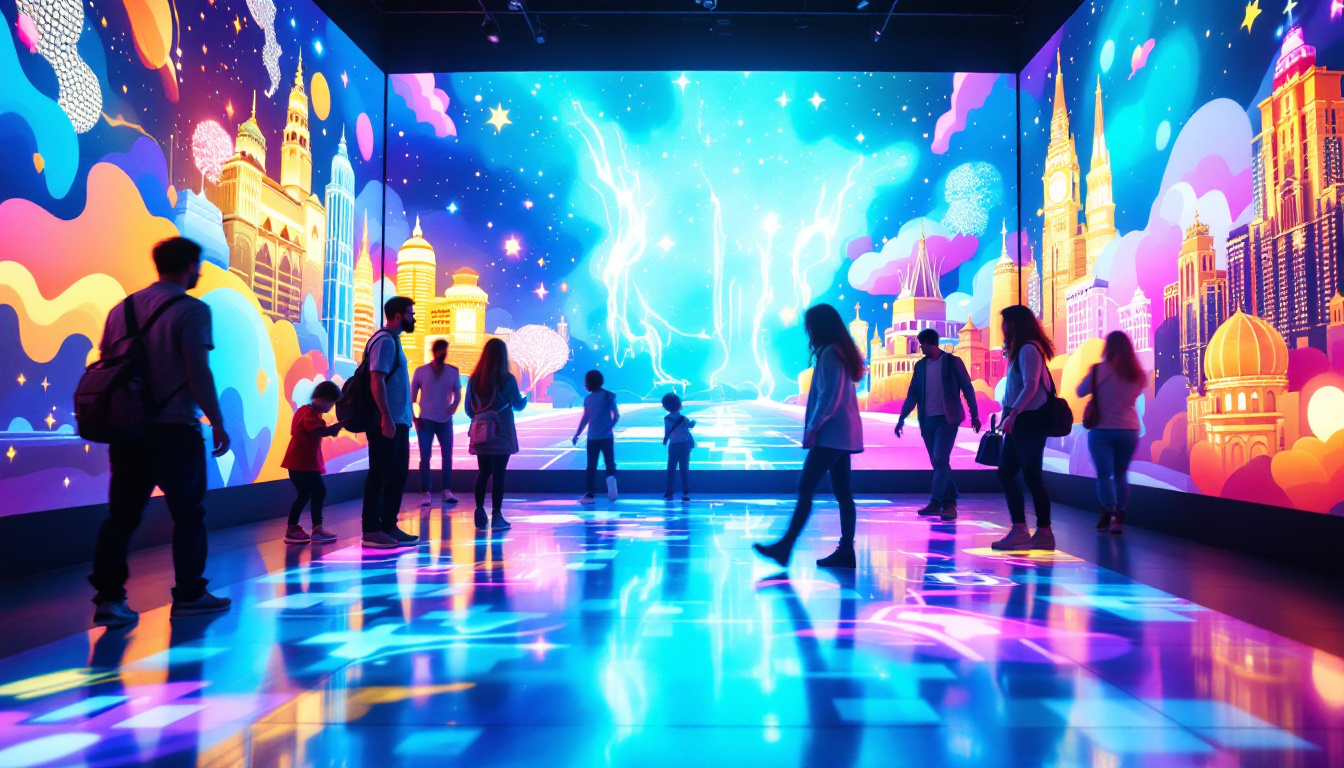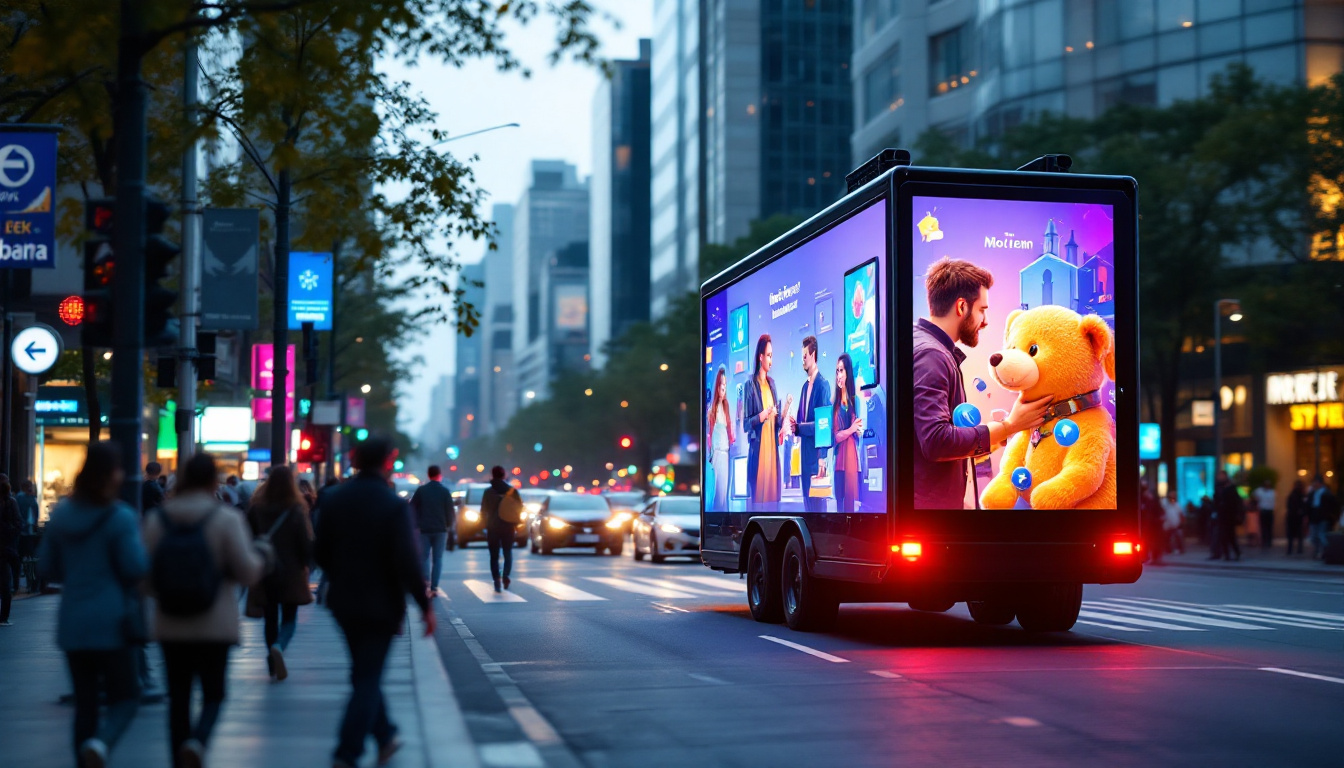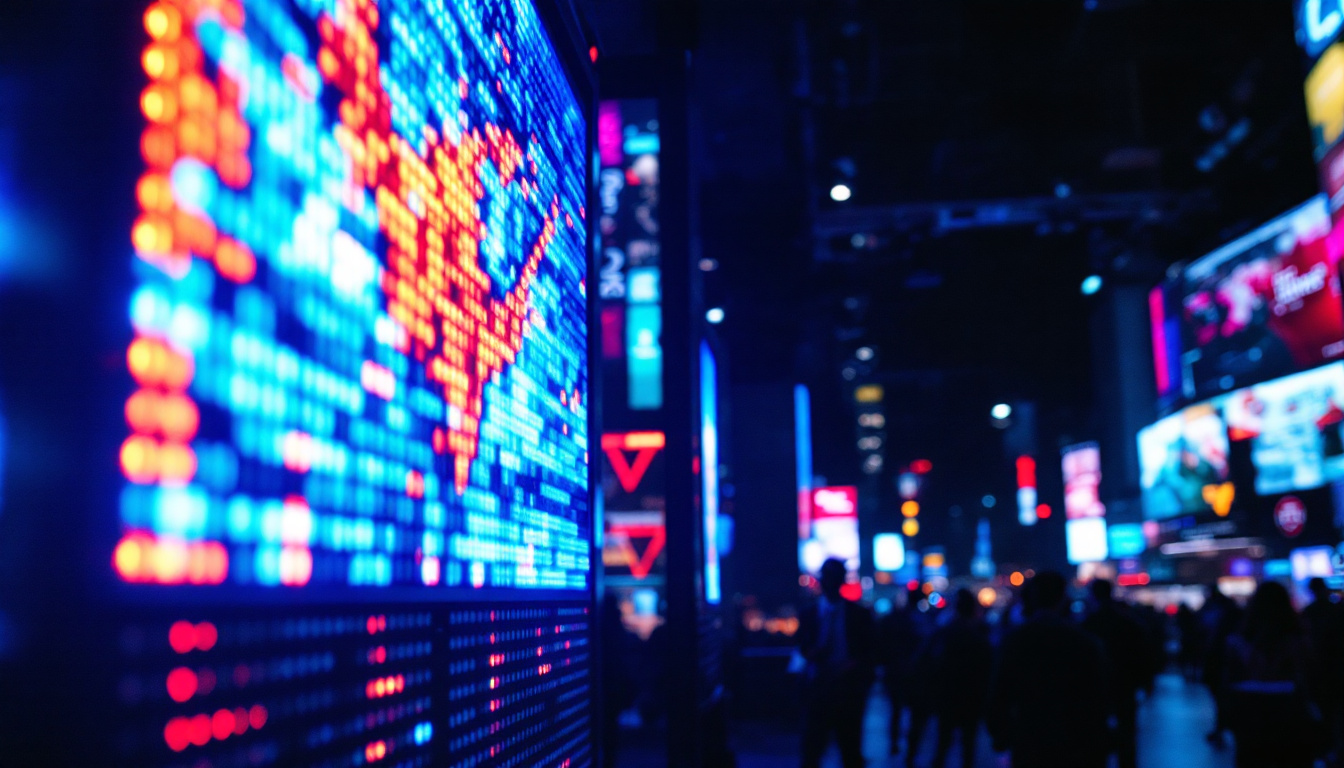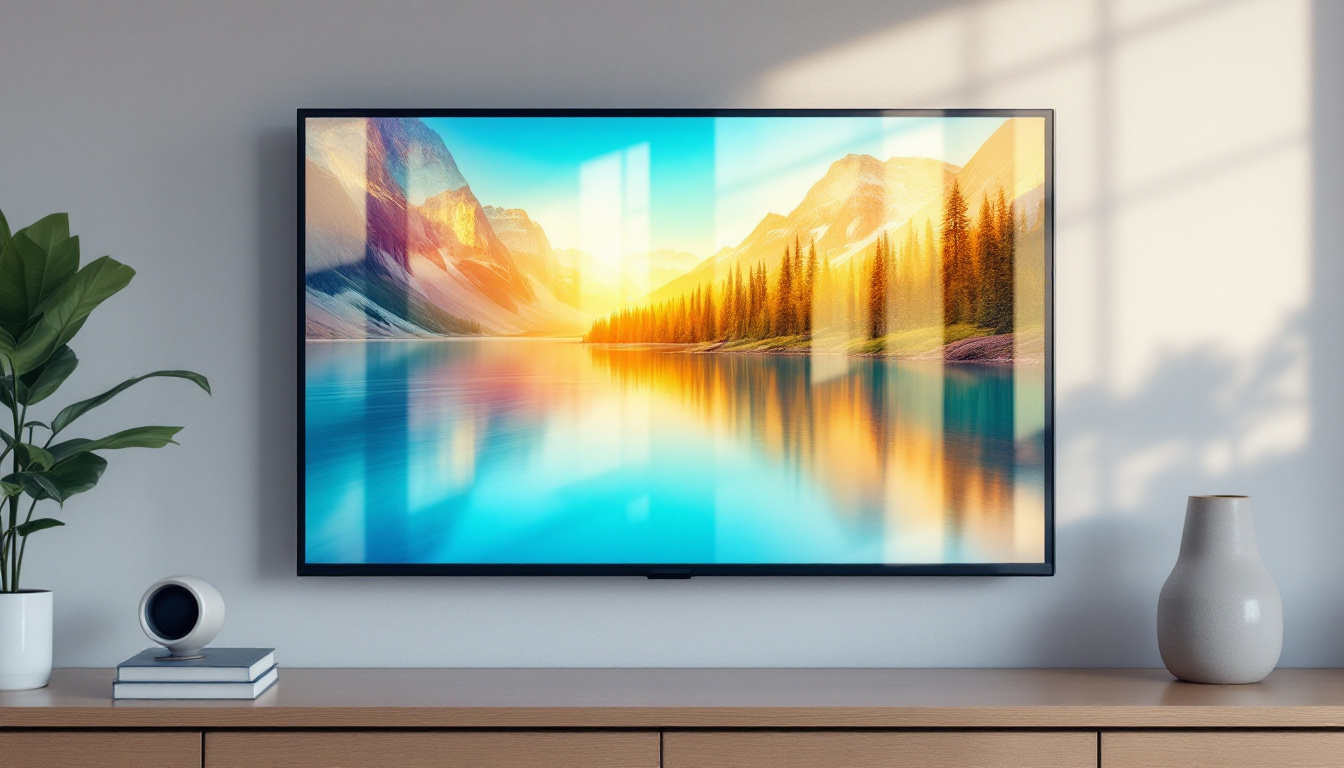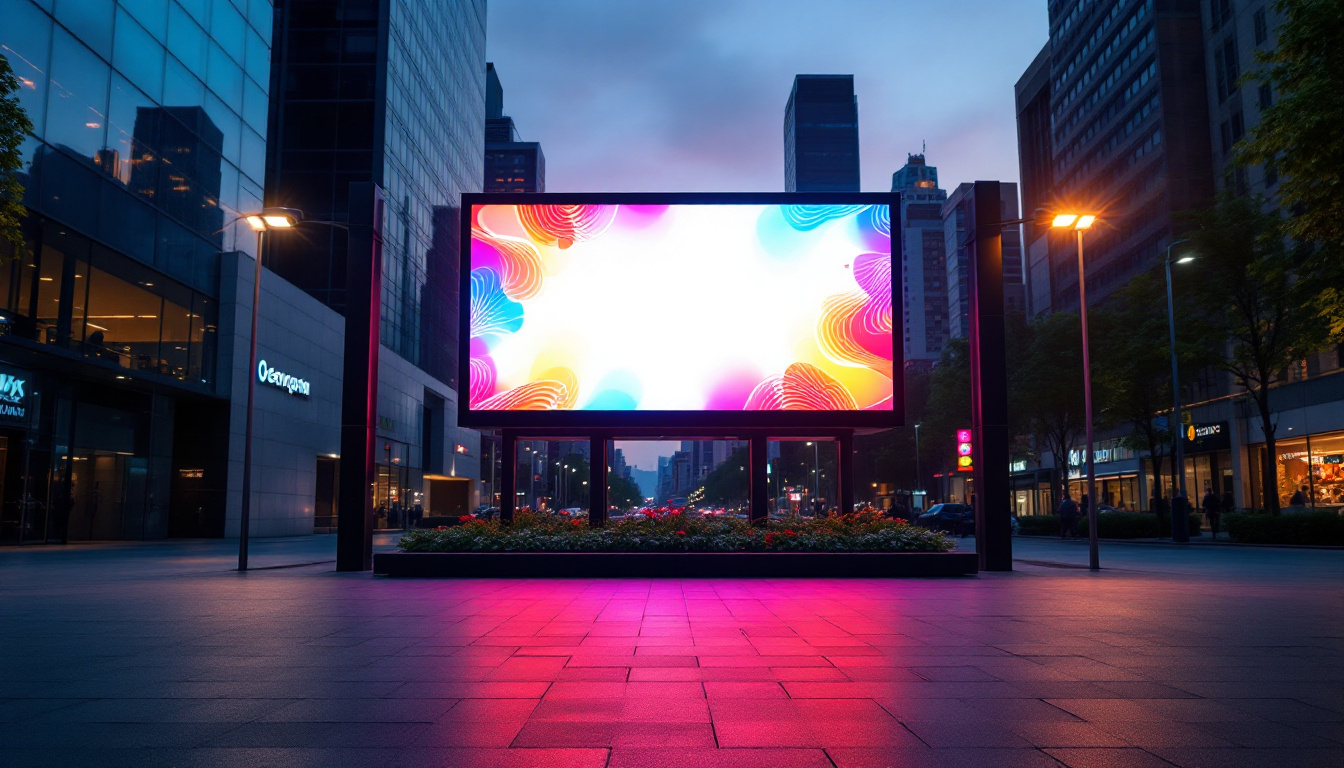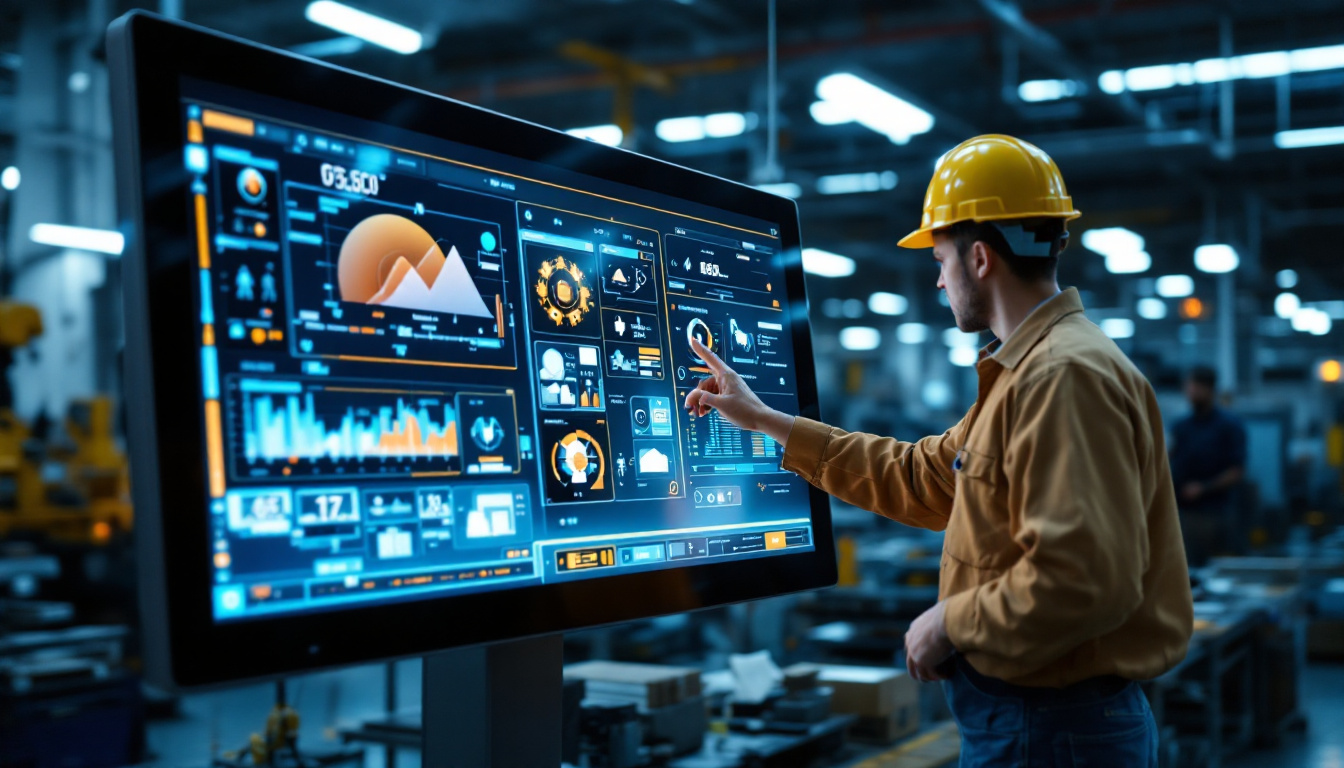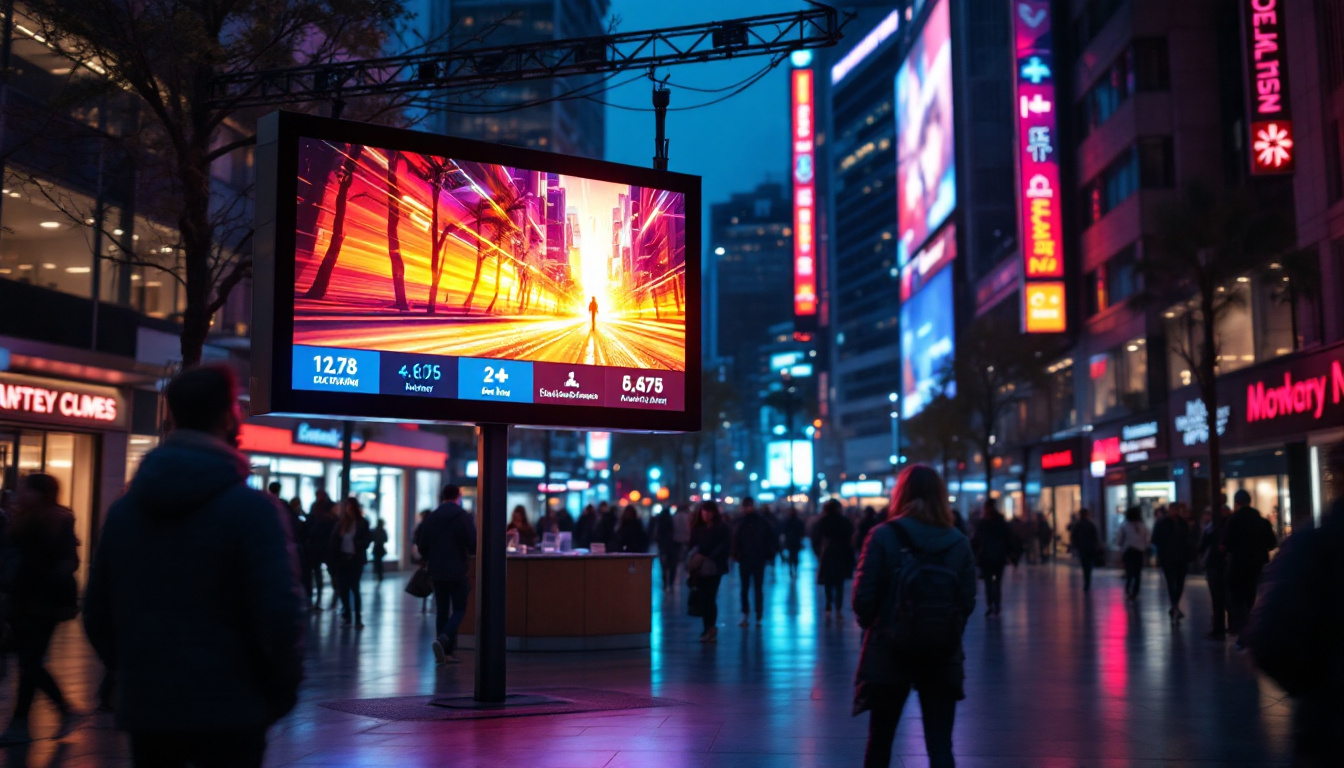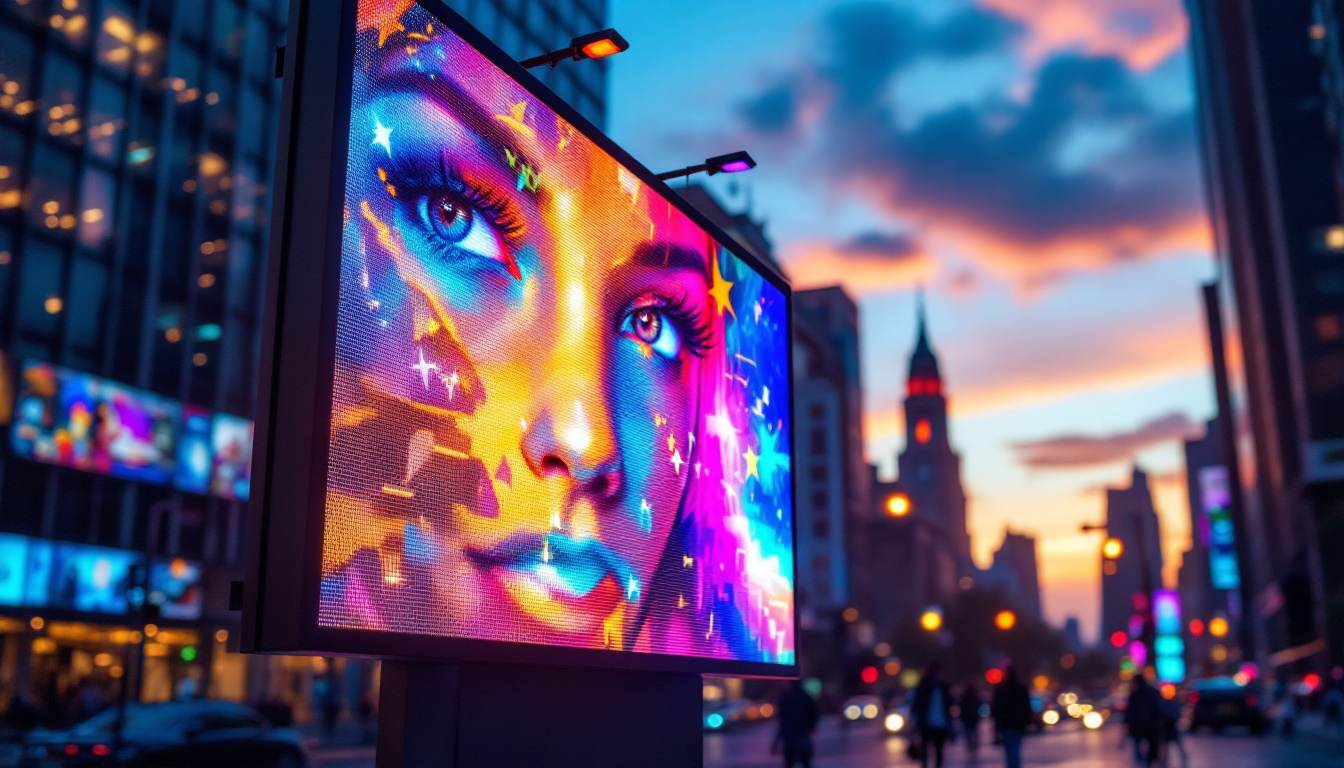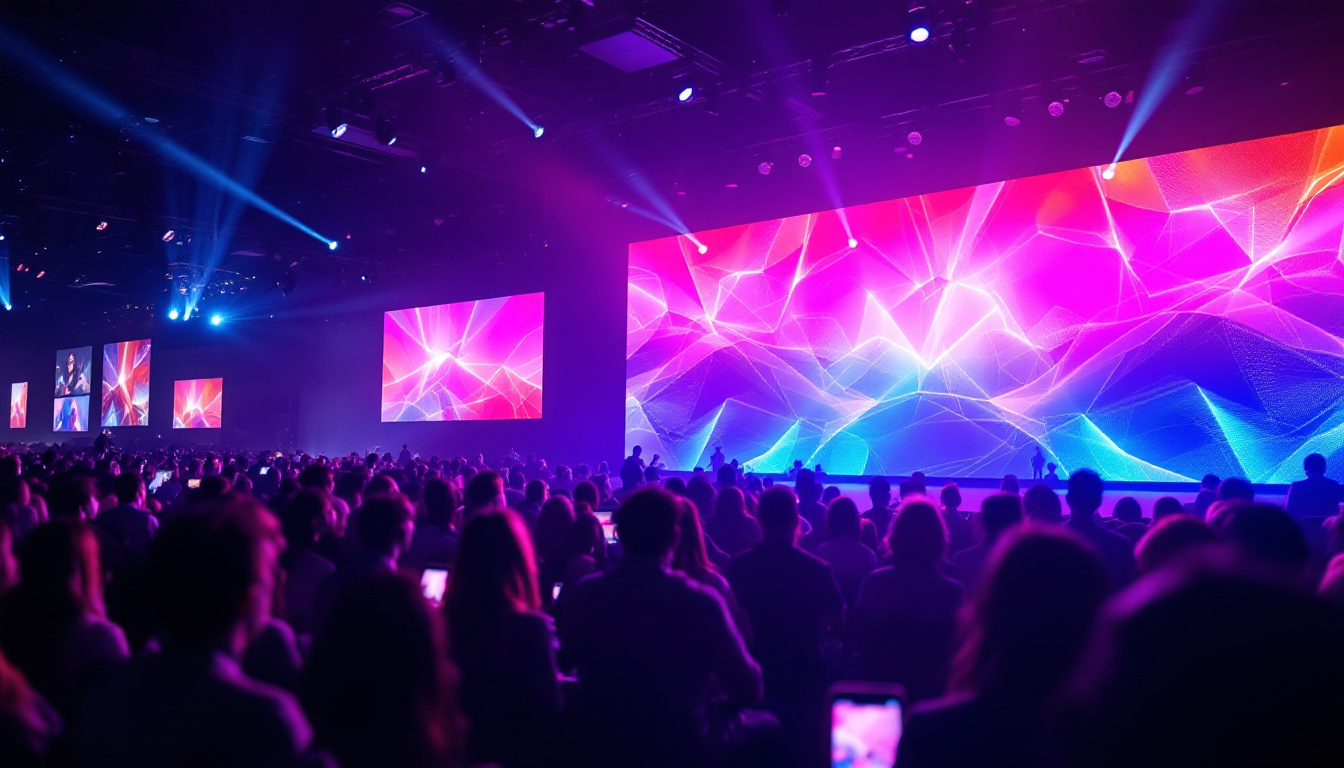In the world of visual technology, LED displays have revolutionized the way information is presented. Among the various sizes available, an 8-foot screen stands out for its versatility and effectiveness in delivering content. This article delves into the intricacies of LED displays, focusing on the features, benefits, and applications of 8-foot screens.
Understanding LED Technology
Light Emitting Diode (LED) technology has transformed the display industry, offering brighter, more efficient, and longer-lasting screens compared to traditional display methods. LED displays are composed of numerous tiny diodes that emit light when an electric current passes through them. This technology allows for vibrant colors and high contrast ratios, making it ideal for various applications. The energy efficiency of LEDs also contributes to their growing popularity, as they consume significantly less power than incandescent or fluorescent lighting, leading to lower electricity bills and a reduced carbon footprint.
How LED Displays Work
At the core of an LED display are the individual light-emitting diodes. These diodes can be arranged in various configurations, such as RGB (Red, Green, Blue) to create a full spectrum of colors. The combination of these colors at different intensities produces the images and videos that are displayed on the screen. The resolution of the display is determined by the number of pixels, which directly impacts the clarity and detail of the images. Moreover, advancements in LED technology have led to the development of finer pixel pitches, enabling ultra-high-definition displays that can render intricate details with stunning precision.
LED displays can be either direct view or backlit. Direct view displays use the diodes as the primary light source, while backlit displays use LEDs to illuminate an LCD panel. Direct view LED displays are typically brighter and offer better viewing angles, making them more suitable for outdoor environments. Additionally, the rapid response time of LEDs allows for smooth motion rendering, which is particularly beneficial for video content and dynamic presentations, ensuring that viewers experience a seamless visual experience without blurring or ghosting effects.
Types of LED Displays
LED displays come in various types, each designed for specific applications. Some of the most common types include:
- Indoor LED Displays: These screens are designed for use in controlled environments such as conference rooms, shopping malls, and theaters. They offer high resolution and excellent color accuracy, making them perfect for showcasing detailed graphics and videos. Furthermore, many indoor LED displays are equipped with advanced features such as touch interactivity, enabling users to engage directly with the content on the screen.
- Outdoor LED Displays: Built to withstand the elements, outdoor displays are typically brighter and more durable. They are commonly used for billboards, sports arenas, and public events. These displays often incorporate weatherproofing technologies and high IP ratings, ensuring that they can function optimally in various weather conditions, from bright sunlight to heavy rain.
- Transparent LED Displays: These innovative screens allow light to pass through, making them ideal for retail environments where visibility is crucial. They can be used in storefronts and exhibitions to create eye-catching displays that do not obstruct the view of the products behind them, blending seamlessly into the environment while still delivering vibrant advertising content.
Benefits of 8 Foot LED Screens
The 8-foot LED screen strikes a balance between size and functionality, making it an excellent choice for various applications. Here are some of the key benefits:
High Visibility
One of the most significant advantages of an 8-foot LED screen is its visibility. The large size ensures that content can be seen from a distance, making it suitable for outdoor advertising and events. Whether it’s a concert, a sporting event, or a promotional display, the screen captures attention and engages the audience effectively.
Versatility in Applications
8-foot LED screens are incredibly versatile and can be used in a wide range of settings. From trade shows and exhibitions to corporate presentations and live events, these displays adapt to various environments. Their portability allows for easy setup and takedown, making them ideal for temporary installations.
Moreover, they can display a variety of content types, including videos, images, and live feeds, making them suitable for dynamic presentations that require real-time updates.
Energy Efficiency
Another compelling benefit of LED technology is its energy efficiency. Compared to traditional display technologies, LED screens consume significantly less power, which can lead to substantial cost savings over time. This efficiency is particularly advantageous for businesses looking to minimize operational costs while maximizing visual impact.
Applications of 8 Foot LED Screens
The applications of 8-foot LED screens are vast and varied, catering to different industries and purposes. Below are some of the most common uses:
Advertising and Marketing
In the realm of advertising, 8-foot LED screens have become a staple for businesses looking to promote their products and services. Their bright and vibrant displays attract potential customers, making them an effective tool for outdoor advertising. Whether placed in high-traffic areas or at events, these screens deliver compelling messages that resonate with audiences.
Corporate Events and Presentations
For corporate events, an 8-foot LED screen serves as an excellent platform for presentations, product launches, and conferences. The large display ensures that all attendees can see the content clearly, regardless of their seating position. Additionally, the ability to display high-resolution graphics and videos enhances the overall experience, making presentations more engaging and impactful.
Entertainment and Sports
In the entertainment industry, 8-foot LED screens are commonly used in concerts, festivals, and sports arenas. They provide a dynamic backdrop for performances and allow audiences to view live action, replays, and promotional content. The immersive experience created by these screens enhances the overall enjoyment for spectators, making events more memorable.
Choosing the Right 8 Foot LED Screen
When selecting an 8-foot LED screen, several factors must be considered to ensure that it meets the specific needs of the intended application. Here are some key considerations:
Resolution and Pixel Pitch
The resolution of an LED screen is crucial for determining the clarity and detail of the displayed content. Higher resolution screens have more pixels per square inch, resulting in sharper images. Pixel pitch, which refers to the distance between individual pixels, also plays a significant role in determining the quality of the display. A smaller pixel pitch is ideal for close viewing distances, while a larger pitch may be sufficient for farther distances.
Brightness and Contrast Ratio
Brightness is another critical factor, especially for outdoor displays that need to compete with sunlight. The brightness level is measured in nits, and a higher number indicates a brighter screen. Contrast ratio, which measures the difference between the darkest and brightest parts of an image, is also important for ensuring vibrant colors and clear images.
Durability and Weather Resistance
For outdoor applications, the durability of an 8-foot LED screen is paramount. Look for screens that are rated for weather resistance, with features such as waterproofing and UV protection. This ensures that the display can withstand various environmental conditions without compromising performance.
Installation and Maintenance
Proper installation and maintenance are essential for maximizing the lifespan and performance of an 8-foot LED screen. Here are some best practices:
Professional Installation
While some may consider a DIY approach, professional installation is recommended for LED screens, especially larger models. Professionals have the expertise to ensure that the screen is mounted securely and configured correctly for optimal performance. This includes proper electrical connections and calibration for color accuracy.
Regular Maintenance
Regular maintenance is crucial for keeping an LED screen in top condition. This includes routine cleaning to remove dust and debris, as well as periodic checks of the electrical components to ensure everything is functioning correctly. Many manufacturers offer maintenance contracts that can help businesses manage these tasks efficiently.
Software Updates
Keeping the software that controls the LED screen updated is essential for optimal performance. Software updates often include improvements and new features that can enhance the display’s capabilities. Regularly checking for updates ensures that the screen operates smoothly and efficiently.
Future of LED Display Technology
The future of LED display technology is bright, with continuous advancements promising even more innovative applications. As technology evolves, several trends are emerging that could shape the future of LED displays:
Higher Resolutions
As demand for high-quality visuals increases, manufacturers are focusing on developing screens with even higher resolutions. This trend will allow for more detailed images and videos, enhancing the viewing experience across various applications.
Integration with Smart Technology
Smart technology integration is another trend gaining traction. LED screens are increasingly being equipped with features such as touch interactivity and connectivity with mobile devices. This allows for more engaging user experiences and opens up new possibilities for content delivery.
Sustainability Initiatives
As environmental concerns rise, manufacturers are also working towards more sustainable production practices. This includes using eco-friendly materials and improving energy efficiency, which aligns with the growing emphasis on sustainability in business practices.
Conclusion
The 8-foot LED screen represents a powerful tool in the realm of visual communication. Its combination of size, versatility, and energy efficiency makes it an ideal choice for a wide range of applications, from advertising to corporate events and entertainment. Understanding the technology behind LED displays, as well as the factors to consider when choosing and maintaining them, is essential for maximizing their potential.
As technology continues to evolve, the future of LED displays looks promising, with innovations that will further enhance their capabilities and applications. For businesses and organizations looking to make a lasting impact, investing in an 8-foot LED screen could be a game-changing decision.
Discover LumenMatrix LED Display Solutions
Ready to elevate your visual communication with an 8-foot LED screen? LumenMatrix is at the forefront of LED display innovation, offering a diverse range of solutions tailored to your needs. From captivating Indoor LED Wall Displays to robust Outdoor LED Wall Displays, and from dynamic LED Sports Displays to sleek LED Transparent Displays, we have the technology to bring your vision to life. Experience the difference with LumenMatrix and transform your space into a vibrant canvas for storytelling. Check out LumenMatrix LED Display Solutions and start creating unforgettable visual experiences today.

